How to water watermelons outdoors: watering frequency and rules
Watermelon - melon culture, which prefers a subtropical climate, therefore grows well in the southern regions of the country. If you care for it correctly, water it often and abundantly, you can grow a rich harvest in regions with a temperate climate.
How to water a watermelon in the open field - we will figure it out in the article.
The content of the article
Features of watering watermelons in the open field
Watermelon needs proper watering throughout the entire period of growth and development. The frequency and abundance of moisture depends on climatic conditions and soil composition.
Irrigation volume and frequency
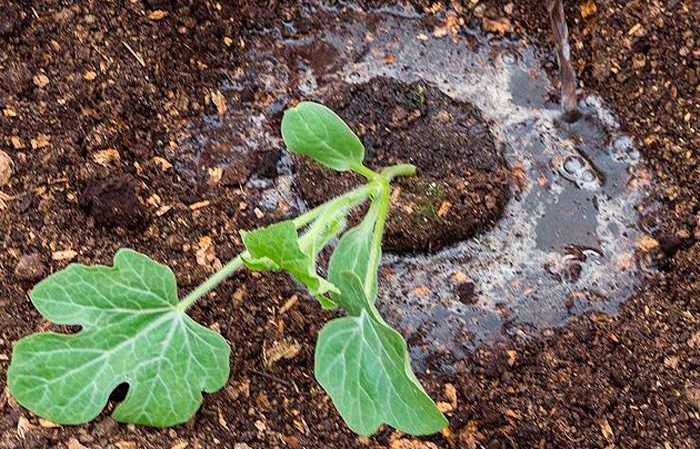
The amount and frequency of watering depends on the growth phase of the plant.
Only planted seeds need daily moisture in the soil. When sprouts appear, they are watered every other day. Seedlings planted in the ground are irrigated according to the same principle. 5 liters of water are used per plant.
The closer to the moment of fruit ripening, the less often melons are watered. In this case, water is used 2 times more. Watering is gradually stopped, but the soil is not allowed to dry out.
Council. To prevent the fruits from spoiling, straw should be laid under them.
Watering nuances depending on the growth phase
Insufficient watering can cause the fruit to crack and deform. Excessive moisture will lead to the development of fungal infections and a deterioration in taste.
The melon culture needs high-quality irrigation at every stage of development:
- Landing. For seedlings, watermelon seeds are planted in separate containers so that in the future, when separating, the roots of the plants do not intertwine and are not damaged. The container should be 0.5-1 liter in volume. Small holes are made at the bottom of the container so that excess liquid flows out. Seeds are watered every day, 50-500 ml per plant. When shoots appear, they are moistened every other day.
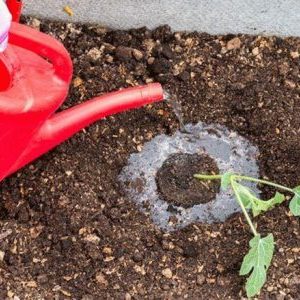
- Transplanting. Seedlings are planted in the ground after three weeks, when 3-4 leaves have formed on the plants. Watering continues every other day. About 5 liters of water are poured under each plant. If the soil remains wet until the next watering, reduce the irrigation frequency to twice a week.
- Bloom. During this period, the melon culture is watered 2 times every 7 days. At least 10 liters are spent on each bush.
- Fruiting. During the formation of fruits, the culture is watered in the same way as during flowering - 2 times a week. Irrigation should be stopped a week before harvest.
How to tell if a watermelon needs watering
When watering watermelons according to a specific schedule, it should be borne in mind that climatic conditions, rains and soil composition affect the frequency of moistening melons.
The soil should not dry out at a depth of 7-10 cm. To check this, you need to dig a handful of earth from this depth. If the soil crumbles during compression, the plant needs urgent watering. If a lump forms, no wetting of the culture is required.
How to properly water watermelons outdoors
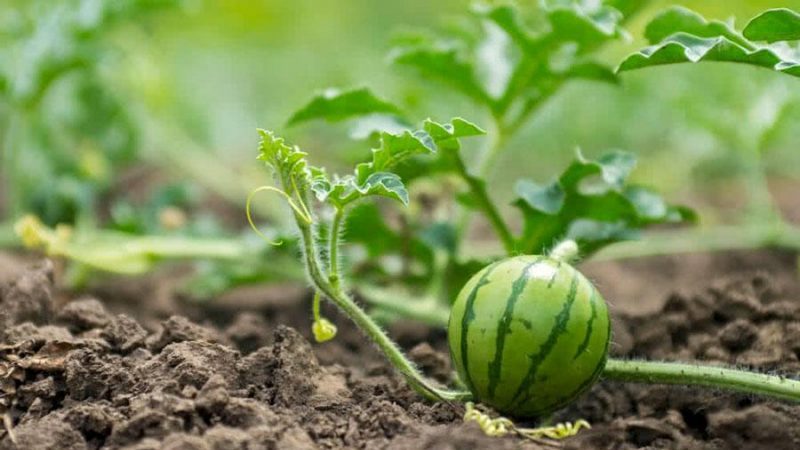
The taste and size of the fruits depend on the correct watering. It is necessary to take into account the temperature of the water and the time of day - with improper irrigation, the melon culture becomes sick.
Watermelon is poured with warm, settled water at ambient temperature (at least 20 ° C). For irrigation, you can use rainwater if you can collect it.
Important! Cold water will cause the plant to die from root rot.
An adult plant needs 10 liters of liquid, young seedlings need 5 liters.
For ease of watering, the liquid is placed in a large reservoir and left to bask in the sun throughout the day. It is best to irrigate in the evening or early morning.
Watering during the day is categorically contraindicated in melons and gourds. In the heat, there is a risk of developing bacterial and fungal infections.
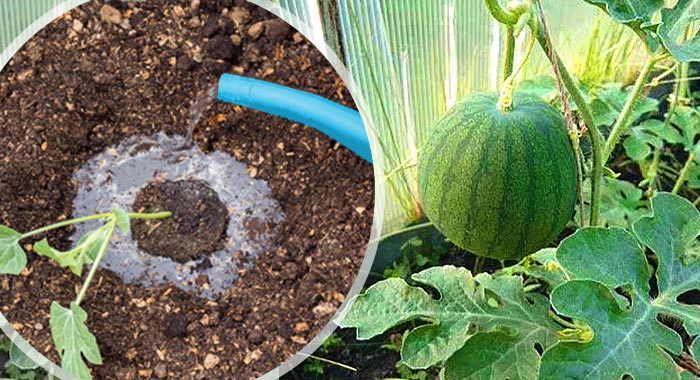
Watering rules:
- Watermelon is watered only with warm water in the evening or morning hours. The liquid is poured strictly under the root, the leaves should not get wet. After that, the soil is loosened.
- After each watering, the culture is fed. Moistened soil receives maximum nutrients.
- Sprinkler irrigation is not suitable as the leaves begin to rot.
- In a small area, watermelon is poured from a watering can to control the abundance of moisture.
- The best method for watering melons and gourds is drip irrigation.
Drip irrigation of watermelons
The drip irrigation method assumes that special pipes are installed throughout the site, connected into one system. Each hose has holes through which water flows to the plants.
This method allows you to adjust the volume of supplied water and its temperature. For this, a thermostat is additionally installed or water is taken from a container already heated in the sun.
Drip irrigation is carried out 3 times in 7 days. If the weather is hot, it is allowed more often; if cold, watering is reduced to 2 times a week.
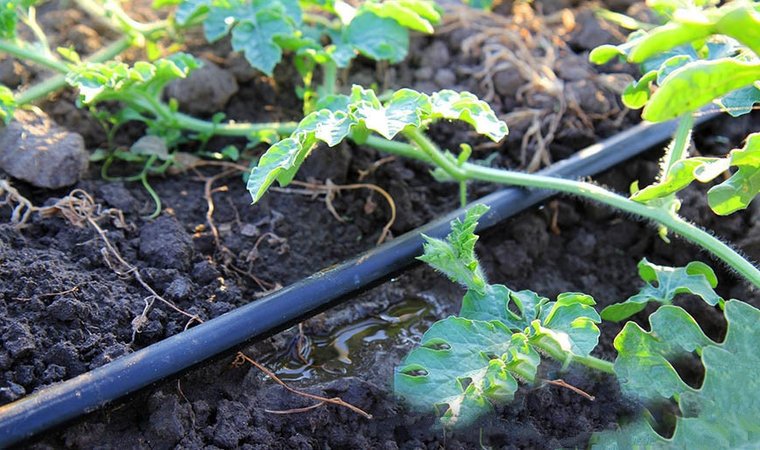
Reference. When watering for 5 hours, the soil is moistened to a depth of about 60 cm.
In the process of drip irrigation, water enters the root of the plant without affecting the leaves, and the soil is not washed out. Drip irrigation saves water and time, allows you to combine the procedure with feeding.
Tips from experienced gardeners
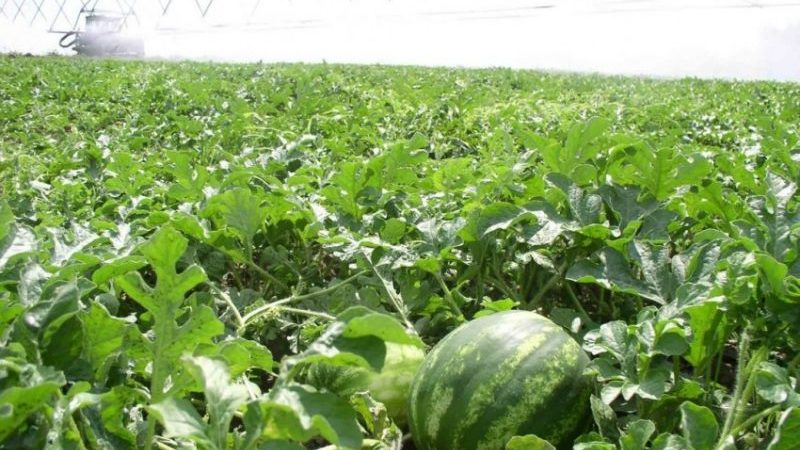
In order to harvest delicious and sweet watermelons at the end of the season and avoid common mistakes, you should heed the advice of experienced gardeners:
- Depending on the climatic conditions, the irrigation method is chosen - manual or drip.
- If it rains heavily, the soil is moistened after 4 days. To prevent an excess of moisture during rain, the beds are covered with a film.
- After loosening, the soil is mulched with fresh grass. This will protect the crop from weeds and retain moisture in the upper layers for longer.
- In order for the fruits to grow and ripen quickly, bread sourdough is used as a top dressing. Bread crusts are poured into a bucket and filled with water, oppression is put on top. The mixture is left to ferment for a week. Before use, the solution is diluted with water in a ratio of 1: 3. A week before harvesting, they are watered with plants.
Read also:
How can you test a watermelon for nitrates at home?
Is watermelon good for the liver and can it be eaten for liver diseases?
Conclusion
Watermelon is a thermophilic plant that requires regular watering. With proper care, melons can be grown in temperate climates. At each stage of development, the frequency and abundance of watering are observed. The closer to maturation, the more water the culture requires. Plants are watered in the morning and evening hours, irrigation is contraindicated in the daytime.
The drip method is suitable for irrigating crops. The liquid falls strictly under the root, does not erode the ground and does not injure the leaves.